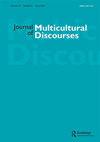Governing superdiversity: a critical commentary on intercultural understanding
IF 1.6
Q3 COMMUNICATION
引用次数: 0
Abstract
ABSTRACT The proliferation of models of diversity governance signals not just persistent unease with diversity itself, but also a trend toward increasingly intensive investments in governance and governmentality across political, social, and media platforms. And, following Sara Ahmed (2012), we are cognizant that the institutionalization of diversity may reinforce as much as it may disrupt whiteness. In our response, therefore, we first consider Elias and Mansouri’s proposals in the context of diversity governance as a political project. In a second step, we explore how cultural difference is expressed in Elias and Mansouri’s idea of intercultural engagement. Third, we bring into better focus how communication is envisioned and deployed, activated and delimited in the interculturalism model that the authors promote. Ultimately, we argue that at the heart of intercultural understanding is a peculiar bundling of culture and communication that targets the interactional order of human relationality in ways consistent with a liberal social order reproducing its social inequities more than challenging them.治理超多样性:对跨文化理解的批判性评论
摘要多样性治理模式的激增不仅表明了对多样性本身的持续不安,而且也表明了在政治、社会和媒体平台上对治理和治理投资日益密集的趋势。而且,继Sara Ahmed(2012)之后,我们认识到,多样性的制度化可能会加强白人,也可能会破坏白人。因此,在我们的回应中,我们首先考虑Elias和Mansouri在多样性治理作为一个政治项目的背景下提出的建议。在第二步中,我们探讨了文化差异是如何在Elias和Mansouri的跨文化参与思想中表达的。第三,我们更好地关注在作者提倡的跨文化模式中,沟通是如何被设想和部署、激活和界定的。最终,我们认为,跨文化理解的核心是文化和沟通的特殊捆绑,它以符合自由社会秩序的方式,以人类关系的互动秩序为目标,再现其社会不平等,而不是挑战它们。
本文章由计算机程序翻译,如有差异,请以英文原文为准。
求助全文
约1分钟内获得全文
求助全文

 求助内容:
求助内容: 应助结果提醒方式:
应助结果提醒方式:


